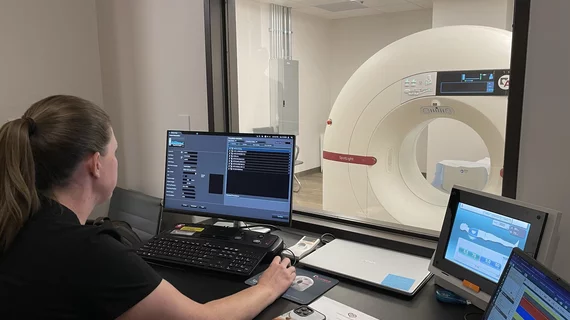Arineta installs first dedicated cardiac CT in U.S. to improve access to CCTA
Arineta Cardio Imaging announced the installation of its first SpotLight dedicated cardiovascular computed tomography (CT) scanner in a U.S. cardiology practice, Connected Cardiovascular Care Associates (C3) in Dallas.
This is the first U.S. provider to install of one of Arineta's systems since the end of its partnership with GE Healthcare, where the system was previously marketed as the GE CardioGraph. Arineta struck off on its own to sell the system a couple years ago and has had its own booth at the Radiological Society of North America (RSNA) and the Society of Cardiovascular Computed Tomography (SCCT).
“Cardiac CT is the Level 1A test for diagnosis of stable and acute chest pain by the American College of Cardiology (ACC) and American Heart Association (AHA),” explained Tony Das, MD, founder and CEO of C3, who said he has seen a profound impact on his practice since its implementation.“Typically, patients must face long wait times in scheduling their appointment and are often referred out to expensive hospitals or imaging centers. With Arineta’s SpotLight, we can now provide them answers in just days instead of weeks.”
The company founded the FDA-cleared SpotLight, designed specifically for cardiac coronary CT angiography (CCTA) imaging. It offers a single beat, whole heart scanner optimized with 140 mm coverage at a rotation speed of 0.24 second per rotation. It is the first dedicated cardiovascular CT scanner designed to provide comprehensive clinical information for diagnosis and therapy planning, and is intended more for the outpatient market.
Arineta said the system allows cardiology practices to quickly and efficiently image their patients in an office-based setting. This can decrease time patients must wait for imaging results and improving access to cutting edge CCTA technology as imaging volumes increase overall for cardiac CT.
Das said the system was purchased to help alleviate the backlog of patients seeking imaging in Dallas. C3 will allow area doctors to image their patients at its facility using the SpotLight, improving access and affordability of cardiac imaging, not only for its own patients, but for those of other providers as well.
Arineta appoints former Siemens CT exec as its CEO
The company also amounted the appointment of its new CEO, Douglas Ryan, who was previously with Siemens Healthineers as vice president of the computed tomography business line. He has 30 years of experience creating business infrastructure and developing market strategies for medical device companies. Prior to Siemens, Ryan worked for Samsung Health and Medical equipment and Toshiba as director of CT and then vice president of diagnostic imaging.
“I am extremely proud to be joining this global team improving the standards and accessibility of cardiac CT,” Ryan said. “Moving forward, we will expand upon the momentum already driving Arineta to supply innovative, affordable dedicated cardio-thoracic CT solutions.”

